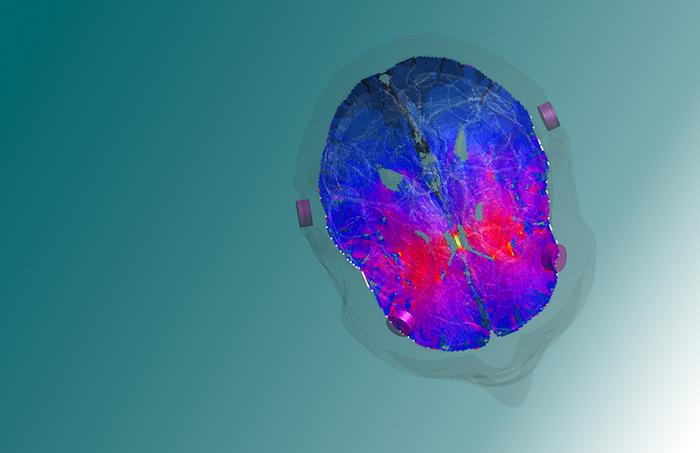May 30 2024
Non-Invasive Deep Brain Stimulation
 We are rapidly entering the era of neuromodulation – using electrical and magnetic fields in order to increase or decrease the activity of specific regions and circuits in the brain. Such treatments are already shown to be effective in treating some Parkinson’s symptoms, depression, OCD, migraines, and other neurological and psychiatric conditions. Computational models of brain anatomy and the connectome have dramatically increased the utility of neuromodulation. We are still on the steep part of the curve, and it will be interesting to see how far this modality goes in the next 10-20 years.
We are rapidly entering the era of neuromodulation – using electrical and magnetic fields in order to increase or decrease the activity of specific regions and circuits in the brain. Such treatments are already shown to be effective in treating some Parkinson’s symptoms, depression, OCD, migraines, and other neurological and psychiatric conditions. Computational models of brain anatomy and the connectome have dramatically increased the utility of neuromodulation. We are still on the steep part of the curve, and it will be interesting to see how far this modality goes in the next 10-20 years.
But there is one technical challenge – reaching the deep brain structures where many of the potentially targeted conditions can be found. The problem is that any electrical or magnetic field has to go through the more superficial brain tissue to get to the deeper structures. The current solution to this problem is to use invasive techniques, such as placing wires in the brain. So called “deep brain stimulation” is now done routinely, using guided stereotactic techniques, but a non-invasive way to accomplish the same goal could lead to a dramatic increase in the utility of neuromodulation.
Researchers have now published a proof of concept study looking at what they call transcranial temporal interference stimulation (tTIS). The idea of tTIS is actually rather simple – it exploits the phenomenon of interference. Waves, regardless of what kind of waves they are, display certain core behaviors, one of which is interference. Wave are basically additive. If a peak hits a peak you get a bigger peak. If the peak of one wave coincides with the trough of another wave, the two waves will cancel each other out. This is how noise cancelling headphones work, for example.
Brain activity has a rather low frequency, and hence responds to low frequency modulation. Much higher frequencies will not coincide with brain waves and therefore have little net effect on brain activity. With tTIS, therefore, you can use two electrical stimulations that are both high frequency but off by a small amount. In the current study they used one frequency of 2000 hz and one of 2080 hz. These are both too high to directly affect brain function, so they can pass through brain tissue harmlessly. You can then aim these beams so that they intersect on the desired deep brain tissue. There the 2000 hz will essentially be subtracted from the 2080 hz, leaving an 80 hz electrical frequency. And that is a frequency which does cause neuromodulation. Voila – non-invasive deep brain stimulation.
In the study they stimulated the striatum of 24 healthy human subjects during reinforcement learning tasks. They found that at 80 hz the tTIS interfered with reinforcement motor learning, while at 20 hz (or sh am stimulation) there was no effect. The subjects had to use the force of their grip on a hand-grip force sensor to control a cursor track a moving object. The hypothesis is that the activity of the striatum is causative of improvement in the task performance through reinforcement motor learning. They found that at 80 hz the subjects did not improve with motor learning, while at 20 hz or sham stimulation they did.
This brings up a nice feature of tTIS as a research tool (and other forms of neuromodulation). These studies are really easy to double blind. The subject has no idea what frequency of electrical stimulation they are receiving. This is now even more true for tTIS, because the effect comes from the small difference between two electrical frequencies – imperceptible to the subject.
It’s also a good example of the power of different technologies working in tandem. Here we use functional MRI scanning to see what’s happening in the brain, tTIS to modulate brain activity, and computers to model what is happening and which parts of the brain are doing what. Increasingly this computer modeling is incorporating AI to help make sense of lots of noisy data. The result is a dramatic increase in the pace of the kinds of research that can benefit from such technologies.
Think about how useful this is for neuroscience research. I wonder what that part of the brain does. Well, let’s turn it off or stimulate it and find out. The goal is to achieve not just a map of the brain or a map of all the connections in the brain, but a functional map of the brain – what are all the modules and circuits and what do they do? How does their function work as part of the whole, and what effect do they have on other circuits in the brain. This research will still take a long time, because the brain is horrifically complex, and there is a lot of neurodiversity out there. But the pace is accelerating.
Then, with this information we can make computer models to test how our models of the brain work, and to further test our hypotheses. Eventually, perhaps, the end result of all this research will be a complete computer model of a human brain. The question is – as I have speculated before – will this computer model of the human brain be, essentially, a human brain? Will it be capable of consciousness? I see no reason why not, as long as it is functioning. In fact, this is one pathway to achieving general AI, just modeling the human brain.
Imagine how useful this computer model will be to research. We would then have unlimited power to adjust the functional parameters of every aspect of brain function to see the effect this has on the whole. But then, if the computer model can be reasonably argued to be conscious, we would run into ethical considerations. Would we need consent from the computer model to mess with its function? Would that consent be free? What if we just keep making copies of the computer model with small tweaks until we get one that consents? What if we name it “Colossus” and put it in charge of our nuclear launch codes? It will be interesting times.






